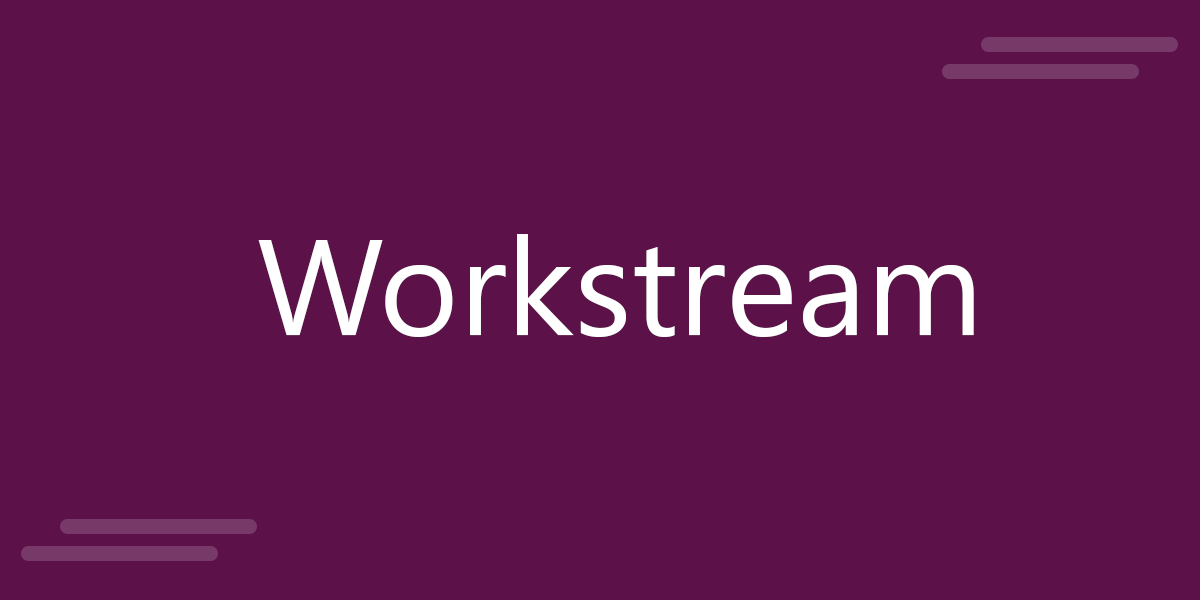What is a Workstream and How can it Benefit Your Organization?
Last updated on September 30th, 2024

The old assembly line model divides tasks between people and organizational units, where everyone has a specialized task. Different units of the organization are so focused on their part of the job that eventually they might simply end up handing off their part of the product to the next group to assemble further. While specialization and division of labour has its advantages, a better, more evolved method of viewing your organization is in the form of a work stream.
What is a Workstream?
A work stream (or workstream) is the progressive completion of various tasks that are done by different groups in a company, working on a single product. A work stream emphasizes on a non-linear method by which people or teams work together simultaneously for the end product during a project or business process.
Since everyone on the team is involved throughout the process, they can make necessary adjustments for a more seamless outcome. This is because everyone sees the product evolve and can contribute to ensure its optimum quality. This is unlike departments or people working in isolation to complete their part of the product without getting fully involved in the evolution of the product.

How Does a Work Stream Function?
Many industries today have moved towards a work stream model. Some examples include the hospitality, food, healthcare, media and entertainment industry. Work streams are a set of predefined processes which set out the structure of activities from the beginning to the end. To ensure that the entire process flows smoothly, work streams make use of the right people, through the right tasks, set to function across an appropriate time.
For example, an IT company tasked with setting up new equipment for an office premises might include procuring equipment -> checking equipment -> installing equipment at the office premises -> configuring equipment -> testing equipment.
In this previous example, all required organizational units and people function as a work stream, from procurement to checking, installation, configuration and testing the product before handing it over to the client. In the IT industry usually different types of engineers perform different tasks, such as setting up the hardware, networking and configuring the software. Hence, we can see from this example as to how each person or organizational unit can collaborate to create a refined end product.
Leading a Work Stream
A workstream is led by someone who is assigned to lead the team, who is the workstream owner or lead. The task of the assigned individual is to coordinate between all people or groups working together to achieve the end product.
Multiple Work Streams in an Organization
An organization can create different work streams for various products, processes and services. In some cases, one work stream can also be used for analysis of another work stream. For example, a quality assurance work stream can be tasked with analyzing the quality of a work stream creating a specific product.
Work Stream Collaboration
Collaboration between a work stream and different work streams within an organization can greatly benefit a product, service or process. Various digital tools can be used for collaboration between a work stream to effectively work on activities from start to finish. Similarly, you can map out the various work streams working on products, services and solutions in your organization and find ways to encourage collaboration between them. There are many digital tools and services such as LivePlan, ProjectPartner and Asana that can help you out in streamlining your workstreams and encouraging collaboration between them. Other more specific tools can help toward specific areas of interest, for example, a test management tool can help writing test cases and unit tests.
Work Streams not Silos
When organizational departments work in silos, the organization becomes dysfunctional. We can see silos as a stream separating itself from the rest, considering itself as an autonomous entity. This results in selfish departmental or individual goals taking priority over the end product or organizational goals. This is where work streams can enable organizations to eliminate silos.

Final Words
Work streams are effective in improving the quality of the end product and allowing collaboration between different groups in an organization. Work streams discourage silos, which can often build up in offices to an extent that people sitting in the same open plan space might not know about the activities of their colleagues from another department occupying the same space. The end product in a work stream are essentially core activities that are to be carried out by different people or groups to finish a single product or work on a single process. This encourages collaboration and raises the stakes for everyone involved, as any negligence would also affect them. The end result is a refined product, in line with predefined quality standards and better employee coordination.
Many organizations already work in a manner similar to work streams, it is merely the perspective of viewing teams as work streams and encouraging the required collaboration that can make all the difference.
